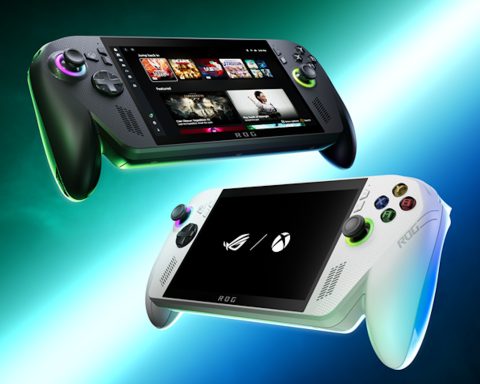I was very impressed with my first experience with Soundcore earbuds when I tested a unit last year. For a modest price, they offered quality sound and noise-cancelling features, all in a tiny form factor and slim, light case that made it so easy to throw into a bag and carry around for everyday use. The Soundcore VR P10 earbuds are somewhat different, in that their primary function is to be used at home rather than on the go, but the underlying philosophy behind them is much the same.
Anker’s primary intention with the VR P10 is, as the name of the device suggests, to use with VR headsets. The device has been endorsed as “Made for Meta” by Zuckerberg’s mob, whatever that accreditation actually entails, and everything about the earbuds has been tuned with that in mind.
Specifically, the earbuds come with a USB-C transmitter, making them ideal for latency-free gaming. I’ve previously used earbuds with a similar function, with the EPOS GTW 270 Hybrid, and the difference between this low-latency transmitter and standard Bluetooth is mild. Mild enough that most people won’t care in most circumstances. However, for those times when you need absolutely perfect precision between sound and on-screen display (think rhythm game on the highest difficulty), or where a disconnect between sound and visuals could be disorientating (VR), the slight improvements here do improve the experience meaningfully enough.
While the VR P10 is focused on the VR experience, it does work across a host of other devices, too. The dongle will happily attach to the PS5, Nintendo Switch, and Steam Deck/PC. The only devices it won’t work with are Microsoft’s Xboxes for some reason. When you’ve got it plugged into VR, PS5 and PCs, it is also compatible with the spatial audio capabilities of those devices for an additional level of immersion. On the Nintendo Switch, however, you’ll only get the console’s standard stereo sound. And, of course, you can connect it via Bluetooth to any compatible device, including your TVs, mobiles, and tablets. In that case, it works just like any other headset or set of earbuds.
You’ll get about 5-6 hours of charge out of it, and the battery in the case will allow you to recharge it a few times over. With just a break here and there you’ll be able to use the earbuds all day long comfortably. That case itself is very neat. It’s quite large compared to most other earbud cases these days. This is because it has an additional spot for the USB transmitter, which is held firmly in place with a magnet while placed in the case. Given how small the transmitter is, and therefore how easy it is to lose, this is a really thoughtful and worthwhile design element. The overall device is also very sleek and stylish. The earbuds have some nice RGB lighting (the colour of which you can tailor via the Soundcore app), and the pristine white of the case looks great for the three or four weeks it will take before it gets scuffed up.
The focus on the in-home VR experience, as well as the effort to get a lot of functionality into a low price, does mean that some unfortunate compromises have been made, however. There’s no active noise cancelling in these earbuds, making them less pleasant to use outdoors, where it’s noisy and the ambient noise conflicts with the earbuds. There are plenty of earbuds at this price point, if not lower, that do have ANC functionality, and that needs to be taken into account.
It’s also not a set of earbuds you want to use while exercising. The earbuds themselves have just an IPX4 rating, which is good for a bit of sweat worked up through an intense gaming session, but I wouldn’t want to test them with a dunking while running a marathon or, as I like to use my earbuds for, dance training. It’s also worth mentioning that the case has absolutely no water resistance and won’t like being in your pocket while doing the aforementioned exercise.
The quality of sound is somewhat uneven, too. If you’re listening to more acoustic music and relatively “gentle” games, then you’ll enjoy the way the earbuds represent the sound. The lyrics are nice and crisp, and the melodies are clean. Jeff Buckley’s Hallelujah comes up pristine, in other words, and that’s all that’s a pretty good benchmark for the ranges that the VR PR10 does best. Likewise, playing Theatrhythm with these earbuds is a joy for the ears, with the vast majority of those wonderful pieces of music coming through with crystal clarity. However, if you’re looking to put yourself in the middle of a war zone, or headbang to your favourite metal beats, the weaker lows and base might disappoint. You can play around with the settings in the app to improve it somewhat, but it’s never going to entirely overcome the fact that there are better options out there.
Speaking of the Soundcore app: it is really good. There are 18 different equaliser options, ranging from “rock” and “Latin” to “podcast” and “dance.” You can also play around and create your own. In addition to that, there are options like “Super Hearing”, which has been specifically designed to enhance the sound of gunfire and footsteps in FPSers, and “Game and Talk”, which allows you to answer a call that comes into your phone without needing to pause your game. You can also customise the “tap the earbuds” controls to do whatever you want the inputs to do, and tweak the lighting on the earbuds (or turn it off if you don’t want your ears glowing).
I don’t think I’ll take the Soundcore VR P10 outside with me for music or gaming on the train or a flight. Given that you expect earbuds to be designed to be portable and easy to fit in the pocket, this might seem like a grave overside by Soundcore. However, for those that want something designed for VR, or just a generally all-around good pair of earbuds for general use at home, the VR P10 is a solid and reasonably-priced option, given its functionality.
















